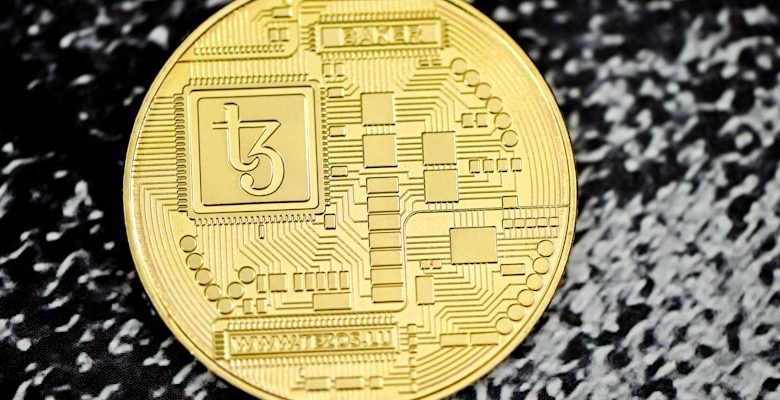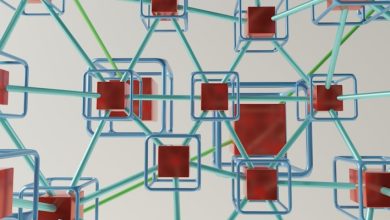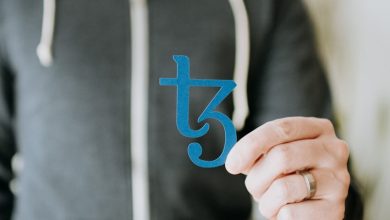How NFTs Are Leveraging Blockchain for Digital Ownership

- Understanding NFTs and their role in digital ownership
- Exploring the intersection of blockchain technology and NFTs
- The rise of NFTs: revolutionizing ownership in the digital age
- How blockchain is transforming the concept of ownership through NFTs
- Unlocking the potential of NFTs for creators and collectors alike
- Navigating the complexities of digital ownership with NFTs and blockchain
Understanding NFTs and their role in digital ownership
NFTs, or non-fungible tokens, are unique digital assets that are stored on a blockchain. Unlike cryptocurrencies like Bitcoin or Ethereum, each NFT has its own distinct value and cannot be exchanged on a one-to-one basis. This uniqueness is what makes NFTs valuable and gives them a role in digital ownership.
When you purchase an NFT, you are essentially buying a digital certificate of ownership for a specific piece of content, whether it be artwork, music, videos, or even tweets. This certificate is stored securely on the blockchain, providing irrefutable proof of your ownership.
One of the key advantages of NFTs is that they allow creators to monetize their digital works in a way that was not possible before. By tokenizing their creations, artists can sell them directly to collectors without the need for intermediaries, such as galleries or record labels.
Furthermore, NFTs have the potential to revolutionize the concept of ownership in the digital age. They provide a way for individuals to truly own and control their digital assets, free from the risk of censorship or unauthorized duplication.
Exploring the intersection of blockchain technology and NFTs
Blockchain technology and NFTs have become increasingly intertwined, with NFTs leveraging the security and transparency of blockchain for digital ownership. The intersection of these two technologies has opened up new possibilities for creators and collectors alike.
One of the key benefits of using blockchain for NFTs is the ability to verify ownership and authenticity. Because blockchain is a decentralized and immutable ledger, it provides a secure way to track and prove ownership of digital assets. This has been particularly valuable in the art world, where provenance and authenticity are crucial.
Additionally, blockchain technology allows for the creation of smart contracts, which can automate various aspects of NFT ownership. Smart contracts can dictate things like royalties for creators, resale rights for collectors, and even automatic transfers of ownership. This not only streamlines the process but also ensures that all parties involved are fairly compensated.
Furthermore, the decentralized nature of blockchain means that NFTs can be bought, sold, and traded without the need for intermediaries. This has democratized access to the digital art market, allowing artists to reach a global audience without relying on traditional gatekeepers. It has also created new opportunities for collectors to invest in digital assets with confidence.
In conclusion, the intersection of blockchain technology and NFTs has revolutionized the way we think about digital ownership. By leveraging the security, transparency, and automation of blockchain, NFTs have created a new paradigm for creators and collectors to interact in the digital space.
The rise of NFTs: revolutionizing ownership in the digital age
NFTs, or non-fungible tokens, have been gaining significant traction in recent years, revolutionizing the concept of ownership in the digital age. Leveraging blockchain technology, NFTs provide a unique way for individuals to buy, sell, and trade digital assets securely and transparently.
Unlike traditional cryptocurrencies like Bitcoin or Ethereum, which are interchangeable and have the same value, NFTs are one-of-a-kind digital assets that represent ownership of a specific item or piece of content. This uniqueness is what makes NFTs so valuable and sought after in the digital world.
By utilizing blockchain technology, NFTs ensure that ownership of a digital asset is securely recorded on a decentralized ledger, providing transparency and immutability. This means that the provenance and authenticity of an NFT can be easily verified, giving owners peace of mind knowing that their digital assets are protected.
Furthermore, NFTs have opened up new opportunities for creators and artists to monetize their work in ways that were previously not possible. By tokenizing their digital creations as NFTs, creators can sell them directly to collectors, bypassing traditional intermediaries and retaining more control over their work.
How blockchain is transforming the concept of ownership through NFTs
Blockchain technology is revolutionizing the concept of ownership through the rise of Non-Fungible Tokens (NFTs). NFTs are unique digital assets that are stored on a blockchain, making them tamper-proof and secure. This has transformed the way we perceive ownership in the digital realm, allowing individuals to truly own and trade digital content in a transparent and decentralized manner.
By leveraging blockchain technology, NFTs provide a way to prove the authenticity and ownership of digital assets without the need for intermediaries. This has opened up new possibilities for creators, artists, and collectors to monetize their digital creations and establish verifiable ownership rights. The transparent and immutable nature of blockchain ensures that the ownership history of an NFT can be traced back to its origin, providing a sense of trust and security in the digital marketplace.
Furthermore, NFTs have enabled the concept of fractional ownership, allowing multiple individuals to own a share of a digital asset. This has democratized the ownership of rare and valuable digital content, making it accessible to a larger audience. The ability to divide ownership rights through smart contracts on the blockchain has paved the way for new investment opportunities and innovative business models in the digital space.
Unlocking the potential of NFTs for creators and collectors alike
NFTs have revolutionized the way creators and collectors interact in the digital world. By leveraging blockchain technology, NFTs provide a secure and transparent way for individuals to own and trade digital assets. This opens up a world of possibilities for artists, musicians, and other content creators to monetize their work in a new and innovative way. Collectors, on the other hand, can now own unique digital items that hold real value, thanks to the authenticity and scarcity guaranteed by NFTs.
Navigating the complexities of digital ownership with NFTs and blockchain
Navigating the intricacies of digital ownership in the realm of NFTs and blockchain technology can be a daunting task for many individuals. With the rise of non-fungible tokens (NFTs), the concept of owning unique digital assets has gained immense popularity. These digital tokens are stored on a blockchain, a decentralized and secure digital ledger, which ensures the authenticity and ownership of these assets.
One of the key advantages of NFTs and blockchain technology is the ability to prove ownership and authenticity of digital assets without the need for a central authority. This decentralized nature of blockchain technology eliminates the risk of fraud and counterfeit in the digital space, providing a secure and transparent way for individuals to buy, sell, and trade digital assets.
By leveraging blockchain technology, NFTs have revolutionized the way digital ownership is perceived, allowing creators to monetize their digital creations and collectors to own unique digital assets. The use of smart contracts in blockchain technology enables the automatic execution of transactions, ensuring that both parties uphold their end of the deal without the need for intermediaries.



